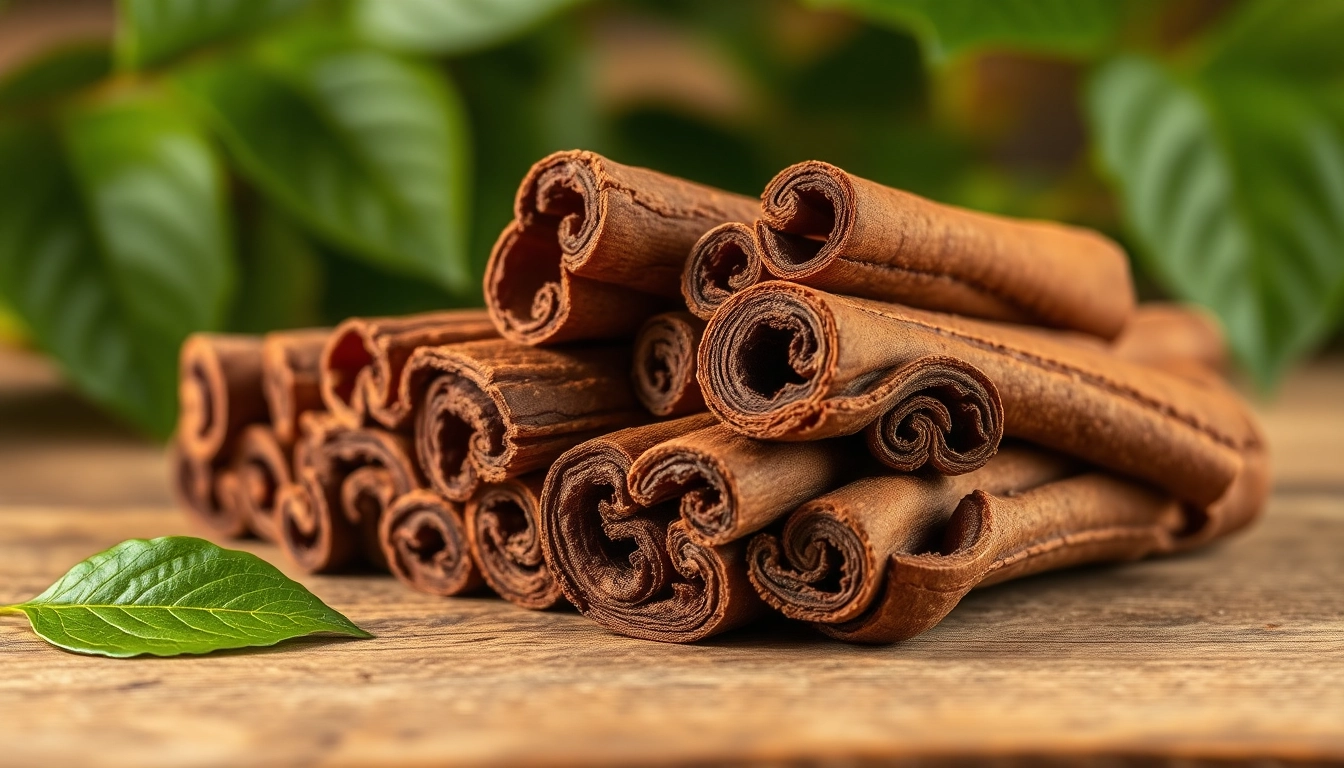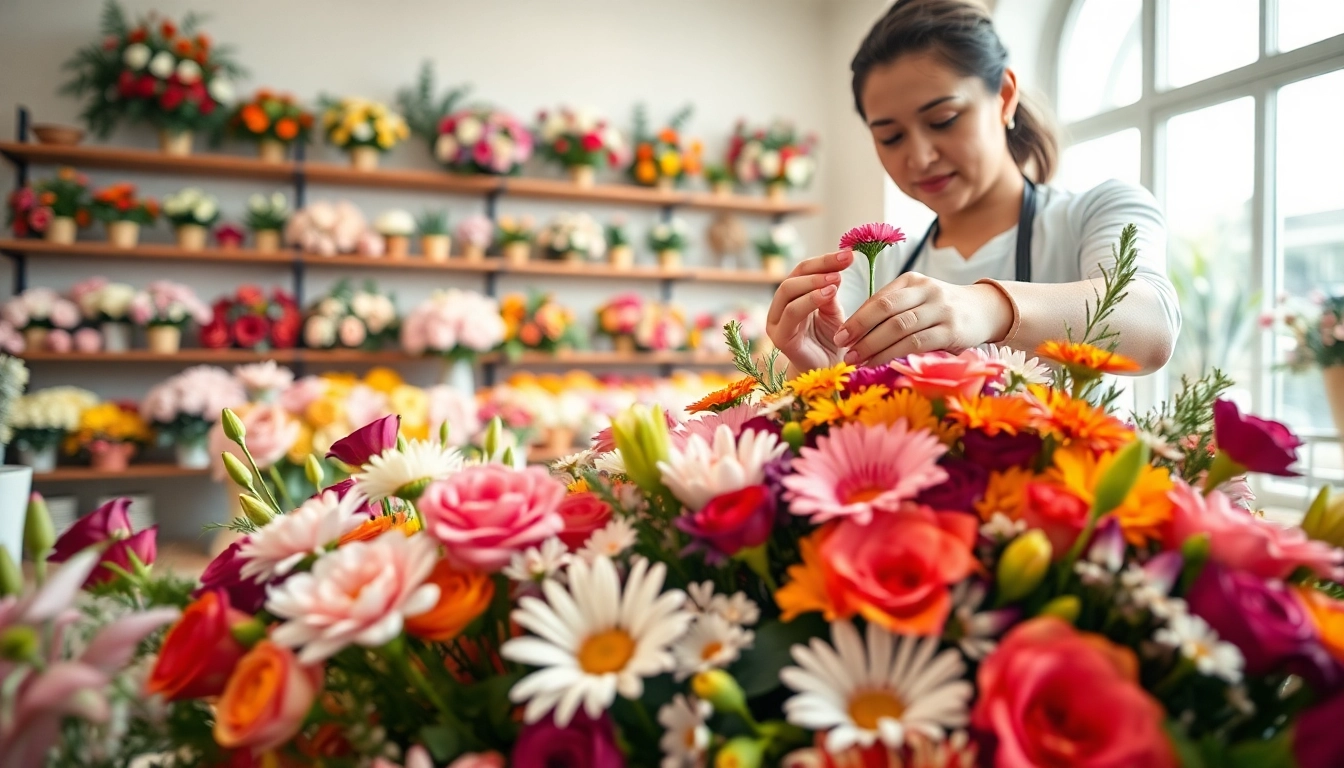

Unveiling the Wonders of Cinnamon Bark: Health Benefits, Uses, and Culinary Delights
Introduction to Cinnamon Bark
Cinnamon bark has held a prestigious place in the culinary and medicinal worlds for thousands of years. Its captivating aroma and unique flavor make it a cherished spice in kitchens around the globe. Beyond its use as a cooking ingredient, cinnamon bark is celebrated for various health benefits and traditional medicinal uses. In this comprehensive guide, we will explore the rich history, health benefits, culinary applications, potential risks, and tips for selecting the highest quality cinnamon bark.
What is Cinnamon Bark?
Cinnamon bark is derived from the inner bark of trees belonging to the genus Cinnamomum. As a spice, it comes primarily from two popular species: Ceylon cinnamon (or “true” cinnamon) and Cassia cinnamon, also known as Chinese cinnamon. These varieties differ in flavor, aroma, and chemical composition. Ceylon cinnamon is prized for its milder, sweeter taste and lower coumarin content, while Cassia has a more pungent flavor and a coarser texture. The bark is harvested by cutting the stems of the trees, allowing the inner bark to be removed and dried into the familiar quills or ground into powder.
Different Types of Cinnamon Bark
Understanding the distinctions between the types of cinnamon bark is crucial for consumers looking to maximize their culinary and health benefits. The two primary varieties are:
- Ceylon Cinnamon (Cinnamomum verum): Also known as “true cinnamon,” this variety is primarily grown in Sri Lanka and has a delicate flavor profile. It is often preferred for its health-promoting properties and lower levels of coumarin, a substance that can be harmful in excessive amounts.
- Cassia Cinnamon (Cinnamomum cassia): native to Southeast Asia and widely available in supermarkets, Cassia cinnamon is more affordable and abundant. However, it contains higher coumarin levels, which may pose health risks if consumed in large quantities.
Historical Significance of Cinnamon Bark
The use of cinnamon bark dates back over 4,000 years, with ancient Egyptians utilizing it for embalming and as a valuable trade good. It was revered in ancient texts, including the Bible, where it was mentioned as an essential ingredient in holy anointing oil. Throughout history, this aromatic spice has inspired exploration and trade routes, leading to its prominence in European cuisine during the Middle Ages. Today, cinnamon bark remains a staple in culinary practices worldwide, cherished for both its flavor and health benefits.
Cinnamon Bark: Health Benefits
Cinnamon bark is not just a flavor enhancer; it also boasts an array of health benefits that have been substantiated through research and traditional practices. Here we delve into some of the most significant health advantages associated with its consumption.
Antioxidant Properties of Cinnamon Bark
Rich in polyphenols, cinnamaldehyde, and other antioxidants, cinnamon bark is a potent defender against oxidative stress in the body. Antioxidants play a vital role in neutralizing free radicals—unstable molecules that contribute to chronic diseases and aging. Studies have shown that cinnamon can reduce markers of oxidative stress, potentially lowering the risk of conditions such as heart disease and diabetes.
Digestive Benefits and Uses
Cinnamon bark has long been used in traditional medicine for its digestive benefits. It can improve gastrointestinal health by alleviating symptoms such as bloating, gas, and indigestion. The spice aids in stimulating digestion by increasing insulin sensitivity and slowing the breakdown of carbohydrates in the digestive tract. Its antimicrobial properties also promote gut health by inhibiting the growth of harmful bacteria.
Cinnamon Bark in Traditional Medicine
In many cultures, particularly within Ayurveda and Traditional Chinese Medicine (TCM), cinnamon bark is classified as a warming spice, making it popular for treating colds, flu symptoms, and menstrual cramps. Its natural anti-inflammatory properties make it effective at reducing pain and inflammation. Furthermore, it may contribute to managing blood sugar levels, thereby benefiting those with diabetes or insulin resistance.
Culinary Uses of Cinnamon Bark
Both Ceylon and Cassia varieties of cinnamon bark lend unique flavors that enhance an array of dishes. Understanding its culinary applications can elevate the dining experience.
Cooking with Cinnamon Bark
Cinnamon bark can be used in various savory dishes, particularly in Middle Eastern and Indian cuisine. It is commonly added to stews, curries, and marinades, where its warm, woody flavor can infuse the dish. Experts recommend using whole bark sticks to flavor broths, allowing it to simmer gently to release its aroma and depth.
Cinnamon Bark in Baking and Desserts
Bakers have long understood the magic of cinnamon in desserts. From classic cinnamon rolls to spiced cakes and apple pies, the bark adds warmth and a comforting essence to sweet dishes. Ground cinnamon is often preferred for baking, but whole pieces can be incorporated to infuse flavor in syrups or custards.
Infusing Flavors: Beverages and Spice Blends
Cinnamon bark is also prominent in beverages. Cinnamon-infused teas can be brewed by steeping whole sticks in hot water, while it is a key ingredient in spiced wines and holiday favorites like mulled cider. Furthermore, it can be blended with other spices to create warmth in chai mixes or seasoned cocktails. For those looking to enhance savory drinks, a cinnamon stick can be used as a stirring stick, imparting its flavor gradually.
Potential Side Effects of Cinnamon Bark
While cinnamon bark is generally safe for most individuals, it’s essential to understand potential side effects and precautions before regular consumption.
Understanding Safety and Risks
Excessive consumption of cinnamon bark, particularly Cassia, may lead to adverse effects due to its high coumarin content. High coumarin intake can cause liver damage in sensitive individuals and lead to respiratory problems if inhaled. It’s crucial to moderate intake and consider the source of the cinnamon to ensure safety.
Interactions with Medications
Cinnamon might interact with certain medications, including anticoagulants and blood sugar-lowering drugs. This interaction could enhance their effects, leading to excessive insulin sensitivity or bleeding risks. Individuals on these medications should consult with healthcare professionals before including significant amounts of cinnamon in their diets.
Dosage Recommendations
The safe daily intake of cinnamon bark varies, but a common recommendation is about half to one teaspoon of ground cinnamon or one to two sticks of whole cinnamon bark. Pregnant women and individuals with liver conditions should exercise particular caution and seek advice from their healthcare provider before consumption.
Choosing Quality Cinnamon Bark
To reap the maximum benefits of cinnamon bark, it’s essential to choose high-quality products. Here are some guidelines to follow.
How to Identify Quality Cinnamon Bark
When selecting cinnamon bark, look for quality indicators. Ceylon cinnamon has a softer, more brittle texture, while Cassia is hard and woody. The bark should have a rich, sweet aroma, and any variations in color should be consistent with the specific type of cinnamon. Ground cinnamon should appear fine and not clump together—signs of moisture or poor quality.
Where to Buy Cinnamon Bark
High-quality cinnamon bark can be found at health food stores, specialty spice shops, and online retailers. Look for certified organic options when possible, as these are often free from additives or contaminants. Additionally, consider buying in bulk to ensure freshness, particularly if you use cinnamon frequently in your cooking.
Storing Cinnamon Bark for Freshness
Proper storage of cinnamon bark is vital for preserving its flavor and potency. Store whole sticks in an airtight container in a cool, dark place. Ground cinnamon should be kept in a similar manner, preferably in a sealed container to prevent moisture exposure. With adequate storage, whole cinnamon bark can last for several years, while ground cinnamon retains optimal flavor for about six months to a year.
Conclusion
As we have explored, cinnamon bark is far more than just a flavorful addition to your recipes; it is a versatile ingredient with a rich history and numerous health benefits. By understanding its types, health properties, culinary uses, potential side effects, and how to choose quality products, you can best utilize this remarkable spice. Incorporating cinnamon bark into your diet may lead to delightful culinary experiences while also contributing to your overall health and well-being.

Discovering the Allure of Vintage Frames: A Timeless Design Choice
Introduction to Vintage Frames
Vintage frames are not just mere accessories; they encapsulate decades of style, culture, and craftsmanship. Whether you are enhancing your eyewear collection or looking to decorate your home with a unique aesthetic, these frames offer something distinct in an age where mass production is commonplace. In recent years, the popularity of vintage designs has surged, making vintage frames a coveted item for collectors and interior designers alike. In this article, we will explore the history, types, and care tips associated with vintage frames, while also discussing how to identify authentic pieces and where to buy them.
What are Vintage Frames?
Vintage frames are defined as decorative frames created in a specific period, often characterized by unique designs and materials. These frames can range from ornate embellishments to sleek minimalist styles, and they are often made from high-quality materials like wood, metal, and glass. The allure of vintage frames stems from their ability to tell a story, serving as a window into the past while providing a rich context for contemporary design. They are typically at least 20 years old and may have served various purposes, from housing family photographs to being an essential accessory in fashion.
History of Vintage Frames
The history of vintage frames can be traced back to ancient cultures where art and its presentation began to take form. In Europe, during the Renaissance, elaborate picture frames were crafted to enhance paintings and display the wealth and status of the owner. By the 19th century, innovations in manufacturing processes allowed for mass production, making frames more accessible and diverse in style. The mid-20th century brought about the emergence of iconic designs—from the bold geometric shapes of the 1960s to the ornate styles of the Victorian era. Understanding the historical context of these frames enriches both their aesthetic value and their significance in art and fashion.
Why Choose Vintage Frames?
There are several compelling reasons to choose vintage frames over modern alternatives. Firstly, they offer a distinctive character that sets them apart from mass-produced items. The craftsmanship often found in vintage pieces speaks to a time when details were paramount, and this attention to quality is increasingly rare today. Furthermore, vintage frames can be more sustainable, as they are reusing materials rather than contributing to new production. Additionally, they serve as a conversation starter, often having stories attached to them that add to their charm. Ultimately, vintage frames can elevate an ordinary space, adding warmth and nostalgia.
Types of Vintage Frames
Different Styles of Vintage Frames
Vintage frames come in a plethora of styles, each reflecting the trends and aesthetics of their time. Some popular styles include:
- Baroque Frames: These frames are heavily ornate, often adorned with gold leaf and intricate detailing. They are a testament to 17th-century craftsmanship.
- Mid-Century Modern Frames: Known for their clean lines and organic shapes, these frames highlight the simplicity and functionality of mid-20th-century design.
- Victorian Frames: Characterized by elaborate gilding and floral motifs, these frames exude a sense of grandeur and elegance.
- Rustic Frames: Typically made from reclaimed wood, these frames bring a natural, homey feel to any decor.
Material Options for Vintage Frames
The materials used in vintage frames contribute significantly to their aesthetic and durability. Common materials include:
- Wood: Wood offers a warm, timeless quality. Different types of wood can yield varying results; for instance, oak provides a sturdy feel while mahogany brings a rich hue.
- Metal: Often used in industrial styles, metal frames can provide a sleek and modern appearance, perfect for contemporary decor.
- Plastic or Acrylic: While not traditionally vintage, older forms of plastic or acrylic can evoke nostalgia and fun retro vibes.
- Glass: This is often utilized in lenses for eyewear frames or protective fronts for picture frames, providing clarity and protection.
Decorative Elements in Vintage Frames
It’s the decorative elements that truly make vintage frames stand out. Elements can include:
- Carvings and Moldings: Intricately carved details can reflect the artistry of the period, with designs often mirroring architectural traits.
- Gilding: Gold or silver leafing adds a stunning visual appeal, often enhancing the frame’s elegance.
- Textured Finishes: Textured glass or distressed wood can add depth and interest to the frame’s appearance.
Identifying Authentic Vintage Frames
Key Features of Vintage Frames
Identifying authentic vintage frames involves keen observation. Authentic pieces often exhibit certain distinctive features, such as:
- Wear and Tear: Authentic vintage frames will show signs of age, such as slight scratches, worn edges, or uneven finishes that signal their journey through time.
- Construction Techniques: Traditional methods, such as dovetail joints or hand-carved elements, often indicate authenticity.
- Labels and Stamps: Many vintage frames will have a maker’s mark or label, which can help trace their origins.
How to Spot Reproductions
As the market for vintage items grows, so does the prevalence of reproductions. To spot these fakes, look for:
- Uniformity: Reproductions often lack the unique characteristics and imperfections found in real vintage frames.
- Material Quality: Lower-quality materials may be used in reproductions, lacking the weight and feel of authentic pieces.
- Inconsistencies in Design: Details such as improper proportions or mismatched components can indicate a reproduction.
Value Assessment of Vintage Frames
Determining the value of vintage frames can involve several factors:
- Age and Rarity: Older frames that are rare often fetch higher prices.
- Condition: Well-preserved pieces will typically command a higher value compared to those in poor condition.
- Provenance: Frames that come with a known history or are linked to notable artists or events can dramatically increase in value.
Caring for Your Vintage Frames
Cleaning Techniques for Vintage Frames
Proper care extends the life of vintage frames. Cleaning techniques should be gentle to avoid damage:
- Dust Regularly: A soft, dry cloth is ideal for removing dust and preventing buildup.
- Use Mild Cleaners: For deeper cleaning, use a mixture of warm water and mild soap, applied sparingly with a soft cloth.
- Avoid Harsh Chemicals: Steer clear of bleach or ammonia-based cleaners as these can damage the finish.
Storage Solutions for Vintage Frames
When not on display, vintage frames require careful storage:
- Climate Control: Store in a climate-controlled environment to prevent warping or damage from humidity.
- Avoid Direct Sunlight: Prolonged exposure can fade colors and damage materials.
- Use Protective Coverings: Wrap frames in a soft fabric or bubble wrap to avoid scratches during storage.
Restoration Tips for Vintage Frames
If a vintage frame shows wear and requires restoration, consider these tips:
- Consult an Expert: For significant damage, professional restoration is recommended to maintain the frame’s value.
- DIY Minor Repairs: Small fixes, such as tightening screws or replacing hardware, can often be performed at home.
- Use Approved Materials: When restoring, use materials that are compatible with the original to avoid further damage.
Where to Buy Vintage Frames
Top Online Retailers for Vintage Frames
Many online platforms feature a wide selection of vintage frames:
- eBay: A well-known marketplace where you can find a variety of frames, often at competitive prices.
- Etsy: A haven for unique and handmade items, including vintage frames.
- Antique Stores Online: Many brick-and-mortar antique stores also have a robust online presence where you can browse their collections.
Antique Stores and Their Offerings
Visiting local antique shops can be a delightful experience:
- Diverse Selection: You may find one-of-a-kind pieces that tell a story, often at a better price than online due to lack of shipping costs.
- Personal Touch: Speaking to vendors can yield more information about the frame’s history and value.
- Opportunity to Negotiate: In-person purchases may provide room for negotiation on price.
Marketplace Insights: eBay and Etsy for Vintage Frames
Both eBay and Etsy stand out for various reasons:
- eBay: Offers a bidding system, providing you with the opportunity to purchase frames at a potentially lower price.
- Etsy: Provides a platform where artists and small businesses offer curated selections, with many listings including personalized descriptions.

Top Fountain Valley Florist: Quality Flowers & Same-Day Delivery Services
Choosing the Right Fountain Valley Florist for Your Needs
When it comes to selecting a florist in Fountain Valley, the options can feel overwhelming. From birthdays to weddings and everything in between, choosing the right florist is crucial to ensure your floral arrangements convey the intended emotion and aesthetic. Not only will their selections vary, but the quality of service and personalization can significantly impact your overall experience. To simplify your decision-making process, we’ll explore various factors to consider when choosing a Fountain Valley florist, focusing on their available arrangements, local benefits, and essential criteria for selection.
Types of Floral Arrangements Available
Florists in Fountain Valley typically offer a diverse range of floral arrangements suitable for every occasion. Here are some categories to consider:
- Personalized Bouquets: Tailored arrangements are an excellent choice for expressing personal sentiments. You can request specific flowers or color schemes to create a truly custom bouquet.
- Event Floral Displays: For larger gatherings like weddings and corporate events, florists provide stunning installations that serve as focal points. These can include centerpieces, bouquets for the bridal party, and decorative elements for venues.
- Sympathy Flowers: Sending condolences can be delicate, and florists often have specialized arrangements for funerals and memorials, with options ranging from simple bouquets to elaborate wreaths.
- Seasonal Arrangements: Many florists offer seasonal selections, highlighting flowers that are abundant and vibrant at different times of the year. This not only ensures freshness but also connects your arrangement to the current season.
Benefits of Local Florists
Choosing a local florist in Fountain Valley comes with its distinct advantages. Here’s why sourcing your flowers from local providers can be beneficial:
- Freshness: Local florists usually source their flowers from nearby growers, ensuring that their flowers are fresher compared to those shipped from far-off locations.
- Community Support: Purchasing from local businesses helps stimulate the local economy and fosters community relationships. Your investment stays in the community, supporting local jobs and initiatives.
- Personalized Service: Local florists often pride themselves on customer service. They are more likely to take the time to understand your needs and preferences, creating tailor-made solutions that align with your vision.
- Expertise: Florists with extensive local experience can provide valuable insights into which flowers are currently in season and which arrangements suit the climate and occasion.
What to Look for in a Florist
Not all florists are created equal, and several factors will help you identify the right one for your needs. Here are some key elements to consider:
- Portfolio and Style: Review the florist’s design portfolio to ensure their style aligns with your preferences. Whether you like traditional, modern, or quirky styles, their previous work can give you insights into their capabilities.
- Customer Reviews: Look for testimonials and reviews from past customers, which can provide insights regarding reliability, quality, and customer service.
- Pricing Transparency: Ensure the florist is open about their pricing structure, including delivery fees and additional costs for premium flowers or customization.
- Communication Skills: A florist who communicates effectively will make the process smoother. They should be attentive, asking questions to understand your vision clearly and providing suggestions accordingly.
Fountain Valley Florist Services Explained
Floral services extend beyond just arranging flowers; they encompass various offerings that cater to differing customer needs. Understanding these services can help you make informed choices.
Same-Day Flower Delivery Options
In today’s fast-paced world, same-day delivery is a valuable service offered by many Fountain Valley florists. This convenience is perfect for last-minute surprises, ensuring that your loved ones receive beautiful flowers right when they need them. To ensure successful same-day delivery, consider the following points:
- Order Timing: Most florists require orders to be placed by a specific cutoff time, usually in the early afternoon. Make sure to check these details when you order.
- Delivery Radius: Confirm that your recipient’s location falls within the florist’s delivery area to avoid any complications.
- Availability of Flowers: Not all flowers are available for same-day deliveries. It’s essential to ask the florist about which arrangements can be delivered on that day.
Customized Floral Designs for Occasions
Customization is a hallmark of quality floristry. Many Fountain Valley florists offer bespoke designs tailored to suit specific occasions. Whether you need arrangements for a wedding, corporate function, or a personal gift, here’s how to approach customization:
- Communicate Your Vision: Start by discussing your preferences, including flower types, colors, and styles. The more details you provide, the better the florist can meet your expectations.
- Consider Themes: If your event has a particular theme, mention it. Florists can design arrangements that complement colors and aesthetics.
- Supply Chain Considerations: Discuss potential challenges regarding flower availability, especially for exotic or off-season blooms.
Subscription Services for Regular Flower Delivery
Flower subscription services are gaining popularity for those who love having fresh flowers regularly. Many local florists in Fountain Valley offer subscription plans with various options, including:
- Frequency Choices: Customers can choose how often they receive arrangements—weekly, bi-weekly, or monthly. This allows for flexibility based on personal preferences and budget.
- Customizable Plans: Subscribers can often select the types of flowers they prefer, including preferences for colors or arrangements.
- Delivery Locations: Many florists allow flexibility in delivery, whether it’s to your home, office, or even as gifts to others.
Popular Flower Types from Fountain Valley Florists
Fountain Valley florists offer a vast selection of blooms suited to various occasions. Here, we explore popular flower types and why they may be the right choice for your needs.
Seasonal Bouquets and Gifts
Flower availability is often dictated by the seasons. Seasonal flowers tend to be fresher, more abundant, and sometimes more affordable. Here’s a closer look at popular seasonal choices:
- Spring: Tulips, daffodils, and hyacinths are iconic spring flowers that bring vibrant colors and cheerful energy to any arrangement.
- Summer: Sunflowers, lilies, and dahlias are perfect for summery settings, radiating brightness and joy.
- Fall: Autumn bouquets often feature warm hues with flowers like chrysanthemums, asters, and seasonal foliage.
- Winter: Even in winter, florists provide beautiful arrangements using amaryllis, poinsettias, and holiday-themed decorations.
Best Flowers for Events and Celebrations
Certain flowers are widely recognized for specific events and celebrations. Understanding these can guide you in making the right choice:
- Weddings: Roses, peonies, and calla lilies are popular wedding flowers, often signifying love and beauty.
- Birthdays: Vibrant arrangements featuring gerbera daisies, mixed seasonal blooms, or favorite flowers of the recipient capturing their essence.
- Funerals: Traditional choices include lilies, roses, and carnations which convey sympathy and support.
Eco-Friendly Floral Choices
With growing awareness around sustainability and environmental impact, many florists in Fountain Valley are prioritizing eco-friendly practices. Here’s what you can expect regarding sustainable options:
- Locally Grown Flowers: Many florists work with local growers, reducing transportation emissions and supporting local agricultural economies.
- Organic Blooms: Florists often offer flowers grown without harmful pesticides, appealing to environmentally-conscious consumers.
- Recyclable Packaging: Sustainable florists are more likely to use eco-friendly packaging materials that minimize waste.
Tips for Ordering from a Fountain Valley Florist
When you’re ready to place your order with a Fountain Valley florist, keep these essential tips in mind to ensure a seamless experience.
How to Choose Flowers for Any Event
Choosing the right flowers is crucial, as they should align with the occasion and the preferences of the recipient. Consider the following tips:
- Understand the Theme: Consider the event’s theme, color palette, and location to ensure the flowers complement the overall aesthetic.
- Inquire About Seasonal Options: Seasonal flowers not only photograph better but are also usually more affordable and fresher.
- Communicate Personal Preferences: If the recipient has specific flower favorites or dislikes, make these known to your florist for personalized arrangements.
Understanding Pricing and Value
Flower prices can vary significantly based on factors like flower type, arrangement complexity, and delivery fees. Here’s how you can navigate pricing effectively:
- Clarify Your Budget: Before communicating with a florist, have a budget in mind. This helps the florist suggest suitable options without going overboard.
- Factor in Extra Costs: Be aware of potential extra costs such as delivery charges, special packaging, or additional services like setup for large events.
- Seek Value, Not Just Low Prices: Look for florists known for quality service and products, as this can enhance your overall experience and satisfaction.
Ordering Flowers Online vs. In-Store
With the rise of digital marketplaces, you have the option to order flowers online or visit a local shop. Each method has its pros and cons:
- Online Ordering: Offers convenience and a broader view of available arrangements. However, you may miss the opportunity to inspect flower freshness in person.
- In-Store Ordering: Allows for a tactile experience where you can choose specific flowers and discuss arrangements directly with a florist.
- Hybrid Approach: Many florists now allow for online browsing of arrangements followed by in-store consultations. This offers the best of both worlds.
Customer Testimonials: Experiences with Fountain Valley Florists
Customer feedback plays a significant role in discerning the quality of florists in Fountain Valley. Dive into some common themes you might find when reviewing testimonials.
Success Stories and Happy Customers
Positive testimonials often highlight the aspects of service that enhance the overall experience. Here are some success stories to consider:
- Emotionally Resonant Arrangements: Many customers praise florists for their ability to capture the essence of their emotions through stunning arrangements, especially for special occasions like weddings and anniversaries.
- Exceptional Service: Positive reviews frequently cite helpfulness, creativity, and attentiveness as standout qualities that established a strong rapport with customers.
Common Complaints and How They’re Addressed
While almost all florists will have some negative feedback in their reviews, understanding these complaints can guide your choice:
- Delivery Issues: Some customers may experience issues with late deliveries or incorrect addresses. Reputable florists often have protocols in place to address and rectify these issues promptly.
- Quality Concerns: Occasionally, customers might find that their arrangements did not match their expectations. Ensuring open communication and editing support before placing orders can help mitigate this risk.
Comparing Local Florists Based on Reviews
Leverage online platforms such as Yelp or Google Reviews for comparative insights. Look for the following when evaluating reviews:
- Consistency: Note if multiple reviews cite similar issues or praise specific aspects. Consistency indicates reliability—either a solid reputation or common pitfalls.
- Recent Feedback: Prioritize recent reviews as they offer insights into current practices, staff changes, or any shifts in quality.

Servizi di Torino Riparazione Cellulari: Qualità e Velocità Assicurate
Introduzione alla Riparazione Cellulari a Torino
Negli ultimi anni, la necessità di riparare i cellulari è cresciuta esponenzialmente, specialmente in grandi città come Torino, dove la tecnologia fa parte integrante della vita quotidiana. Quando un dispositivo si danneggia, che si tratti di uno schermo rotto o di una batteria che non si ricarica più, trovare una riparazione cellulari Torino affidabile diventa fondamentale. Ma cosa offre il mercato di Torino nel campo della riparazione dei cellulari? Cerchiamo di esplorare questo settore in modo dettagliato.
Cosa offre il mercato di Torino riparazione cellulari?
Il mercato della riparazione cellulare a Torino è ampio e variegato. Diverse aziende e professionisti offrono servizi che vanno dalla semplice sostituzione di componenti, come schermi e batterie, a riparazioni più complesse che richiedono competenze specializzate. In questo contesto, i clienti possono trovare servizi rapidi e di qualità, che vengono eseguiti con parti di ricambio originali o equivalenti di alto livello.
Le principali aziende di riparazione a Torino
Tra le principali aziende che operano nel settore della riparazione di cellulari a Torino, spiccano nomi come iRiparo e MobileCare, che offrono servizi di alta qualità e tempi di attesa brevi. Altri punti di riferimento includono la Bottega del Sordo, che si distingue per l’attenzione al dettaglio e la qualità dei ricambi utilizzati. Queste aziende non solo riparano dispositivi, ma spesso offrono anche assistenza per smartphone e tablet di diversi marchi, garantendo così un ampio ventaglio di opzioni per gli utenti.
Vantaggi di scegliere un professionista a Torino
Affidarsi a professionisti nella riparazione di cellulari a Torino presenta numerosi vantaggi. Prima di tutto, la competenza e l’esperienza dei tecnici garantiscono che le riparazioni siano effettuate a regola d’arte, minimizzando i rischi di ulteriori danni. Inoltre, molte aziende offrono garanzie sulle riparazioni, offrendo così maggiore tranquillità ai clienti. Infine, scegliere un professionista locale facilita l’accesso a servizi di emergenza e consulenza rapida.
Costi e Tempistiche di Riparazione Cellulari
Qual è il costo medio per la riparazione a Torino?
Il costo medio per la riparazione di un cellulare a Torino varia notevolmente in base al tipo di danno e al marchio del dispositivo. In generale, la riparazione di uno smartphone può costare tra i 55 e i 110 euro. Soprattutto, i marchi come Samsung tendono ad avere costi di riparazione più elevati, con una media di circa 107 euro, mentre i dispositivi Huawei offrono opzioni più economiche, intorno ai 64 euro.
Tempi di attesa: quanto ci vuole per riparare il tuo cellulare?
I tempi di attesa per le riparazioni variano in base al tipo di danno e alla complessità della riparazione. Molti negozi a Torino offrono servizi di riparazione rapida, che possono essere completati in meno di 30 minuti. Tuttavia, per riparazioni più complesse, come la sostituzione della scheda madre o il recupero dati, potrebbero essere necessarie da alcune ore a un giorno o due. È sempre consigliabile verificare in anticipo i tempi di attesa con il tecnico che gestisce la tua riparazione.
Come risparmiare sulla riparazione dei cellulari a Torino
Per risparmiare sulle riparazioni dei cellulari a Torino, è utile seguire alcuni consigli pratici. Prima di tutto, confrontare diverse offerte e controllare le recensioni online può aiutare a trovare la soluzione più conveniente. Inoltre, chiedere promozioni o sconti ai tecnici o nei negozi può rivelarsi utile. Infine, mantenere il proprio dispositivo in buone condizioni attraverso una manutenzione regolare può prevenire danni costosi in futuro.
Tipi di Riparazioni Offerte a Torino
Riparazioni per smartphone e tablet: cosa considerare
Le riparazioni offerte a Torino coprono un ampio spettro di dispositivi, dai più semplici smartphone ai tablet più complessi. I clienti devono, però, considerare la serietà del danno. Per problemi relativi a schermi rotti o batterie scariche, è spesso possibile effettuare riparazioni in tempi brevi. In casi di danni interni o liquidi, potrebbe essere necessario un intervento più approfondito, che permette di risolvere il problema in modo definitivo.
Sostituzione di schermi e batterie: dettagli importanti
La sostituzione di schermi e batterie è una delle riparazioni più comuni richieste dai clienti. La scelta di utilizzare componenti originali è cruciale per garantire la funzionalità e la durata del dispositivo. A Torino, molti negozi si impegnano a fornire solo ricambi di alta qualità. Prima di procedere con la riparazione, è importante chiedere al tecnico informazioni sui ricambi utilizzati e sulle garanzie associate.
Riparazioni specializzate: iPhone e altri marchi
Alcune riparazioni richiedono competenze specifiche, in particolare quando si tratta di dispositivi noti per le loro peculiarità, come gli iPhone. Questi possono richiedere attrezzature specifiche e competenze avanzate per la loro manutenzione. I negozi specializzati nella riparazione di iPhone e altri marchi come Huawei e Samsung sono diffusi a Torino e sono in grado di offrire un servizio di alta qualità.
Come Prepararsi per una Riparazione
Checklist per il backup dei dati prima della riparazione
Un passaggio essenziale prima di portare il proprio cellulare per una riparazione è assicurarsi di eseguire un backup dei dati. Questo processo può includere la memorizzazione di foto, contatti e messaggi in un luogo sicuro. Le opzioni per il backup variano in base al dispositivo e agli strumenti disponibili, quali iCloud per gli iPhone o Google Drive per gli Android. Assicurarsi di avere accesso ai dati anche dopo la riparazione è cruciale.
Cosa aspettarsi durante la riparazione del tuo cellulare
Durante la riparazione, è utile sapere cosa ci si deve aspettare. I tecnici possono fornire informazioni dettagliate sul processo e sugli eventuali costi imprevisti. Inoltre, è opportuno chiarire se il servizio prevede un’essenziale assistenza e dopo la riparazione, per garantire che eventuali problemi possano essere risolti tempestivamente.
Domande frequenti da fare al tecnico
Quando si porta il proprio cellulare per la riparazione, è bene preparare alcune domande da porre al tecnico. Alcuni interrogativi utili potrebbero essere: “Qual è il problema principale rilevato?” “Quali sono le opzioni di riparazione?” e “Cosa succede se la riparazione non è possibile?”. Chiarire questi elementi può garantire una maggiore comprensione del processo e dei costi coinvolti.
Testimonianze e Success Stories
Storie di clienti soddisfatti a Torino
Le testimonianze di clienti soddisfatti possono fornire una panoramica dei servizi offerti dai professionisti di riparazione a Torino. Molti utenti segnalano esperienze positive riguardo alla rapidità del servizio e alla qualità dei risultati. Storie di reparazioni efficaci su iPhone e Samsung sono comuni tra gli utenti, evidenziando l’importanza di scegliere servizi di qualità.
Come le recensioni influenzano la scelta del servizio
Le recensioni online sono un fattore decisivo nella scelta di un servizio di riparazione. Piattaforme come Google e Yelp offrono spazi per condividere esperienze personali, aiutando futuri clienti a prendere decisioni informate. È quindi importante prestare attenzione a queste recensioni e considerare le esperienze degli altri come parte del processo di scelta.
Il valore del passaparola e della raccomandazione
Il passaparola e le raccomandazioni da parte di familiari e amici sono ancora tra i modi più efficaci per trovare un servizio di riparazione affidabile a Torino. Acquisire suggerimenti da fonti di fiducia può risparmiare tempo e denaro, contribuendo a trovare le migliori opzioni per le riparazioni di cellulare. La reputazione di un’azienda è spesso costruita su esperienze condivise da questi canali personali.










